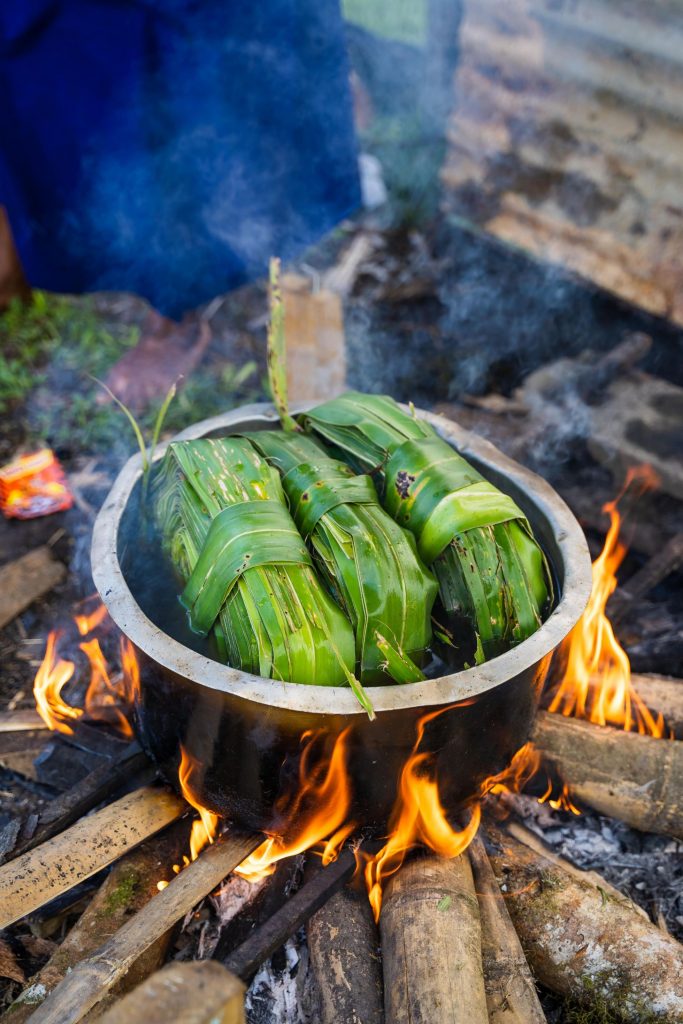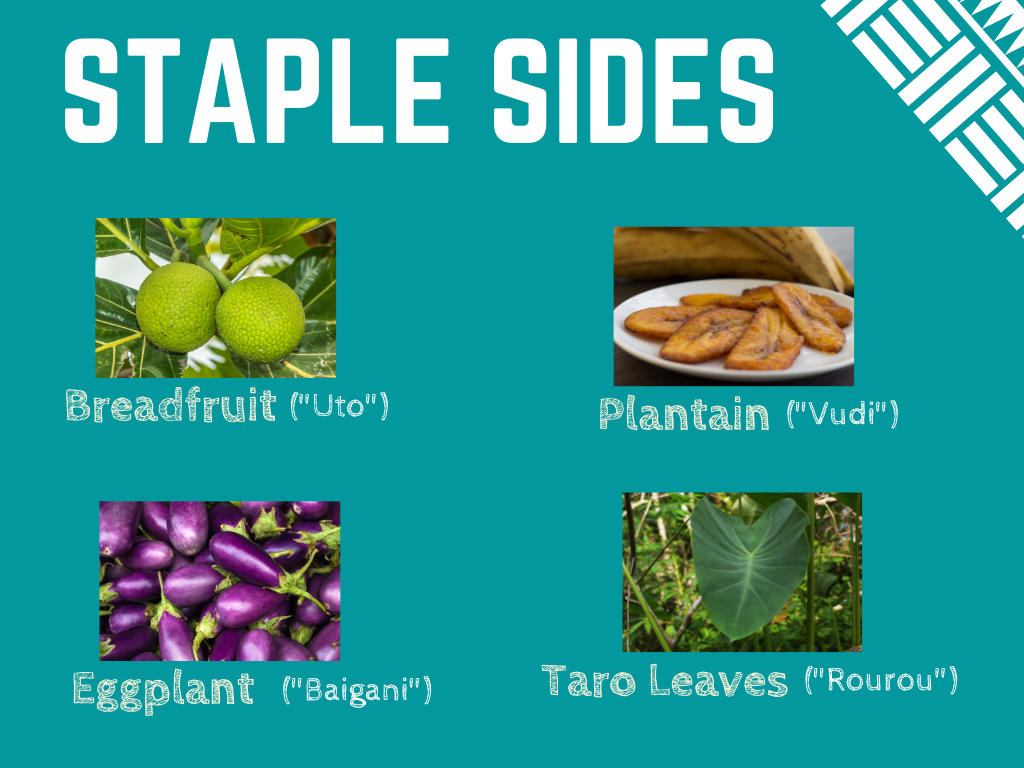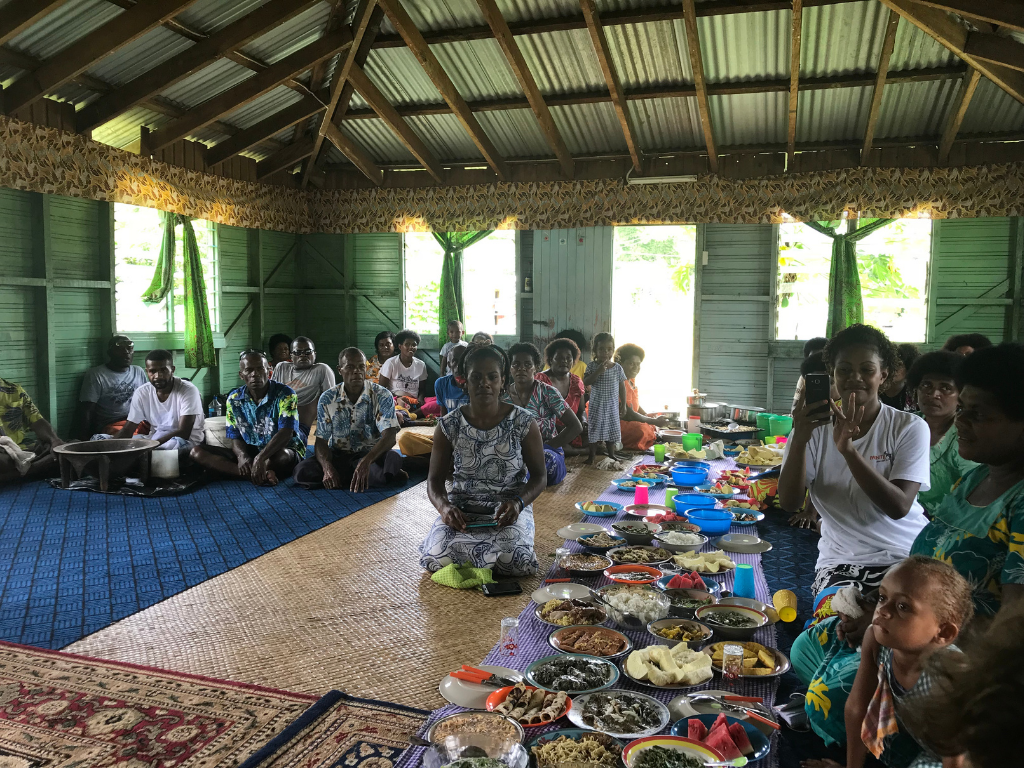Food in the Village
Food is another subject in the village setting that may feel a million miles away from home. In rural villages, subsistence farming and fishing is a means of daily existence. Because of this, your diet will be heavily influenced by the location the village finds itself. One thing is for certain however; the communities work extremely hard to grow, prepare and provide volunteers with their meals.
Fijian cuisine is representative of the many cultural influences that have touched the islands throughout history. The flavors of Western, Chinese, Indian, Polynesian, and Melanesian cultures are all present in the meals of modern Fiji.
As one might expect, in rural areas, seafood is prevalent in the Fijian diet. Other mainstays include beef, pork, poultry, taro root, leaves, yam, and breadfruit. Tropical fruits such as guava, mango, banana, lime, and pineapple are popular, as is coconut milk, which is used in a variety of recipes. Common spices and sauces include garlic, ginger, turmeric, coriander, fenugreek, cumin, soy sauce, and chili peppers.
Some Staple Ingredients
Food in rural Fiji is carbohydrate heavy, so expect plenty of root crops such as taro and cassava.
In coastal locations, Fijian’s eat lots of fish and many meals will consist of fresh fish (usually served with the head on), local vegetables and rice.
Meat is a rarity and generally only brought out on special occasions. Indian curries, rice, dahl and roti are common due to influences from the large Indo-Fijian communities in Fiji. Fried foods are becoming more and more common in villages. Fijians also have a very sweet tooth, and love to eat cakes and sugary tea.
Please be prepared that there is not a great variety of food within this rural diet and meals can seem repetitive, heavy and basic. There is often limited fruit in the villages as they are harvested on a seasonal basis and rarely farmed, so it is a good idea to supplement your diet with multivitamin tablets.
If you feel you may take time to adjust to the basic diet, you may wish to bring energy bars from home to supplement your diet in the first couple of days.

We ask you to be very sensitive to the host families and understand the effort and care that goes into preparing food for their guests. We advise you to try all foods offered as this is part of the experience of immersing into Fijian life. If you eat all the foods on offer then you will achieve a good balanced diet. The food may feel a little repetitive quickly whilst on project, try to remember it is only for a few weeks and the experience is about living in the authentic Fijian lifestyle!
If you are struggling at all with the food, don’t hesitate to speak to our leaders for advice. Think Pacific funds each hosting village so that our teams are absolutely no burden on the local resources. However, it is important from a cultural experience and also your integration that our teams eat traditional foods and we ask the villagers to keep the meals traditionally Fijian.


Food Preparation
Food preparation in a village is generally conducted by the mother of the household. It will very likely not be the case that the family use a gas stove or an electric oven; in rural locations, an open fire is used in a kitchen usually located next to the main house, supplied regularly with firewood and using large metal pots to prepare the meal.

This is time intensive and we’d always suggest that you get involved with the preparation of dinner as much as you can – you’ll no doubt be met with “Oh no, don’t worry, I’ve got it!” but if you persist it is a great opportunity to learn more about Fijian culture, genuinely help out and its a golden opportunity to have a good chat with your family. They will be very grateful.
Food cooked over an open fire like this also has a unique smoky flavour, very different from the food you can expect in the resorts and cities!
Lovo
If you’re lucky, you may get to taste a meal from the Fijian lovo, a famous Pacific method of cooking food. A lovo is essentially an underground-oven and it is an ancient technique of preparing food. This is generally only reserved for special occasions due to the time and resources that go into its preparation but the result is incredible… anything that goes into a lovo comes out absolutely DELICIOUS.
Watch the video below on how it is done and take some notes to impress your Fijian family with some knowledge upon arrival.
Etiquette
Fijians will eat seated on a mat on the floor, and will eat with their fingers rather than knives and forks. There may often be many different people at your home for lunch and dinner. In Fiji it is custom to invite anyone who is passing into the home to eat. Always remember that prayers will be said before you start to eat. The whole village comes together during celebrations and ceremonies to cook and enjoy communal feasts, this is common on Sunday after church services.

You will eat with your own Fijian family, they will provide all of your meals in the community. Please be prepared that portion sizes can be very large! Fijians eat big and to eat well in the Fijian perspective is equated to being happy and healthy. This leads to one cultural difference that often arises on project being the tendency of Fijian families to say that their guests are ‘looking fat’! This, in their eyes, is a compliment and is for the most part entirely not based on the physical reality. Even when volunteers have lost weight, the phrase may come out as an expression of how well they are adapting to rural lifestyle or how happy they look. Please try not to take it personally!
Top Tips:
- ‘Masu’ before meals and snacks – remember Fijians will pray before meals
- Take multivitamins to supplement your diet.
- Adopt a ‘Food is Fuel’ attitude if you find things tricky – You need to eat to stay healthy and try all foods and a balanced diet to maintain energy levels.
- ‘Refrain from Food Chat’ – Be sensitive to conversations with fellow students about food you are missing, how food differs, what you dislike, what you are most looking forward to eating when you leave etc…
